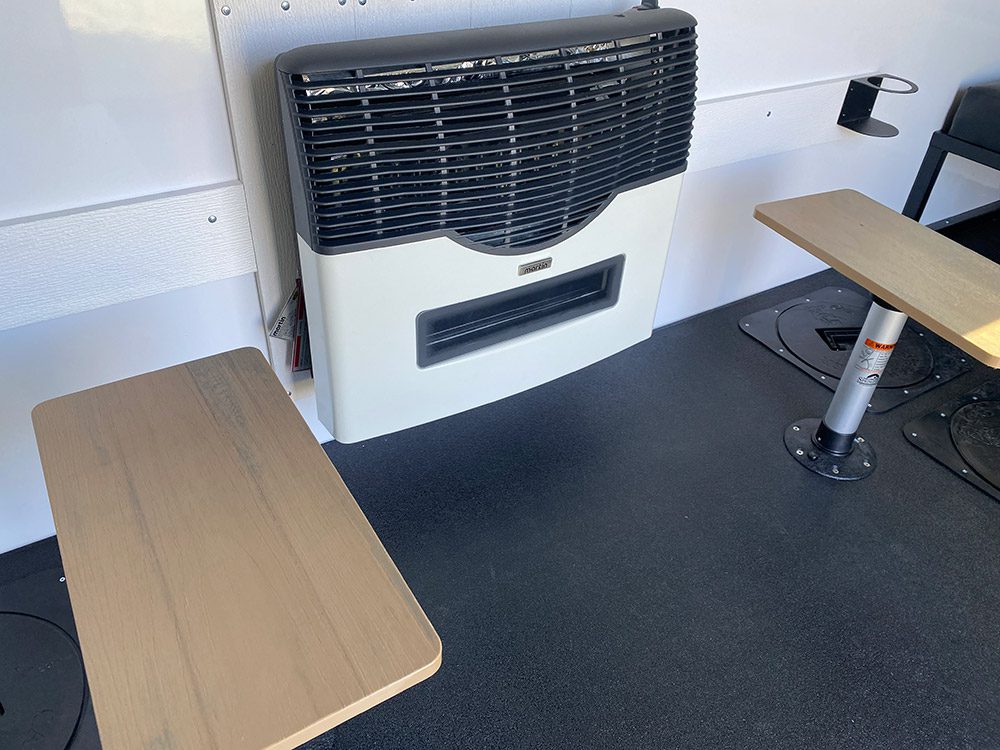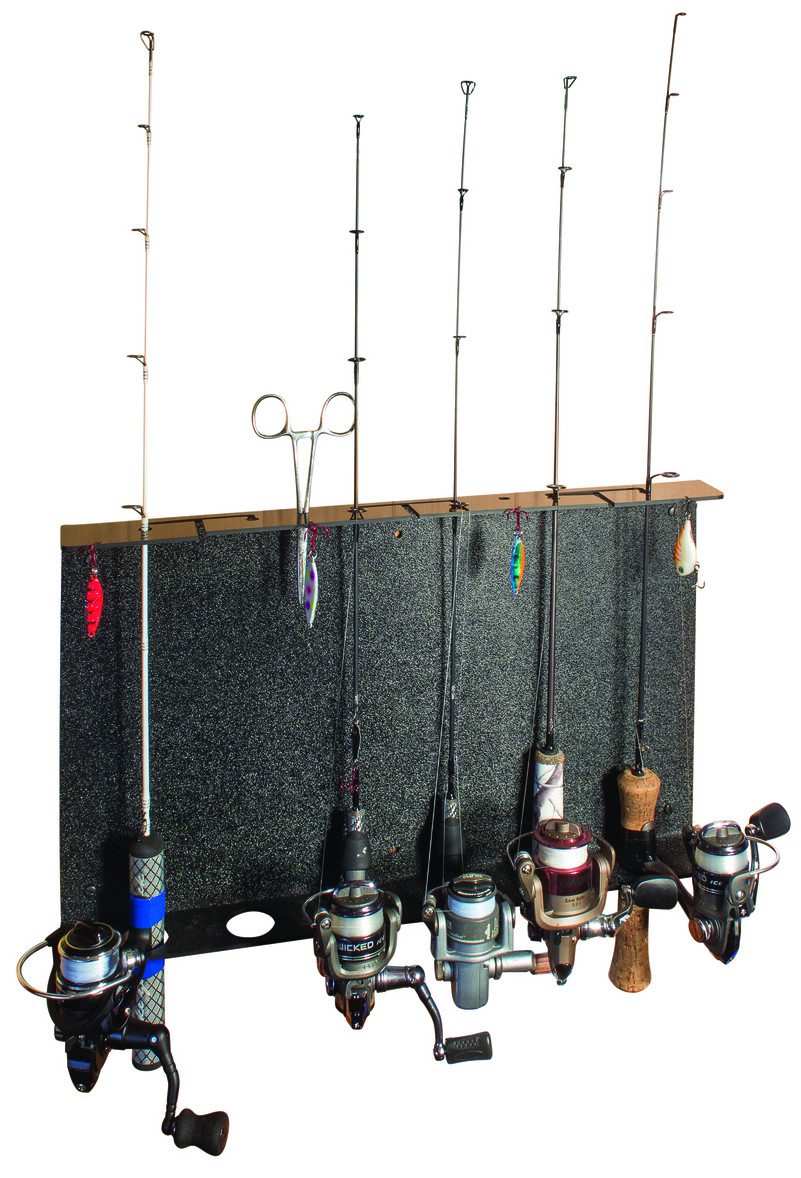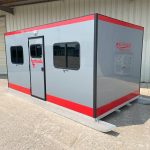Prepping your Skid House for the Season
When it comes to ice fishing, having a well-prepared skid house can be the difference between a fishing trip full of elation or aggravation. Prepping your skid house properly before the season starts will not only save you from potential headaches and inconveniences but also contribute to your safety while on the ice.
So, let’s jump into the details of each aspect, ensuring that you have everything you need to make this ice fishing season a memorable one with your Ambush Skid House.
Checking and Maintaining Your Skid House’s Battery
One of the essential components of your Ambush Skid House is the battery, which powers various electrical devices, such as lights and electronics. Before heading out onto the ice, it’s crucial to check the condition of your battery. Here are some steps to guide you in prepping your skid house:
- Assessing battery health and charge level: Start by inspecting the battery for any signs of damage, such as corrosion, leakage, or loose connections. Check the battery terminals and cables for tightness and cleanliness. If you notice any issues, address them promptly.
- Cleaning battery terminals and connections: Corrosion on battery terminals can hinder the battery’s performance. To clean them, prepare a mixture of baking soda and water. Use a wire brush or a toothbrush to gently scrub away the corrosion. Rinse with clean water and dry the terminals thoroughly before reconnecting.
- Replacing or recharging the battery if necessary: If your battery is old or doesn’t hold a charge well, it may be time for a replacement. Consider investing in a high-quality deep-cycle marine battery suitable for cold weather conditions. If the battery still has a decent charge but needs a boost, connect it to a compatible battery charger and let it recharge fully.
- Tips for maximizing battery life during the season: To prolong the life of your battery, take these precautions:
-
- Disconnect the battery when not in use to prevent drain.
- Keep the battery in a cool, dry location to avoid extreme temperatures.
- Avoid overloading the battery with excessive electrical devices.
- Regularly check the battery charge level and recharge as needed.
- Consider using a battery maintainer or tender during long periods of inactivity.

Inspecting and Preparing Propane Tanks for the Heater
Propane heaters play a vital role in keeping your skid house warm and comfortable during your ice fishing trips. When prepping your skid house for the season, inspect and prepare your propane tanks to ensure they are in good working condition. Follow these steps to get your propane tanks ready for the heater:
- Checking propane levels and acquiring refills if needed: Start by checking the propane levels in your tanks. Make sure you have enough fuel to last the season. If the tanks are running low, arrange for refills from a reputable propane supplier. It’s always better to have extra propane on hand to avoid running out during a fishing trip.
- Inspecting propane tank valves and connections: Examine the tank valves and connections for any signs of damage or wear. Ensure the valve handles turn smoothly and there are no leaks around the connections. If you detect any issues, such as damaged valves or loose connections, have them repaired or replaced before using the tanks.
- Testing the heater for proper functionality and performance: Before connecting the propane tanks, test the heater to ensure it operates correctly. Ignite the heater and allow it to run for a few minutes to confirm that the flame is strong and consistent. Monitor for any unusual smells, sounds, or signs of malfunction. If you notice any problems, consult the heater’s user manual or contact a professional for assistance.
- Safety precautions for handling and storing propane tanks: Propane tanks should always be handled and stored with caution. Here are a few safety reminders:
-
- Keep propane tanks upright and secure them properly during transportation.
- Store tanks in a well-ventilated area away from ignition sources, flammable materials, and direct sunlight.
- Never store or use propane tanks indoors or in confined spaces.
- Familiarize yourself with the proper procedures for connecting and disconnecting propane tanks to the heater, following the manufacturer’s instructions.

Cleaning and Organizing Your Skid House
A clean and well-organized skid house not only enhances your comfort, but also makes your ice fishing experience more enjoyable. Take the time to thoroughly clean and organize your Ambush Skid House. Follow these steps for a tidy and efficient space when you’re prepping your skid house:
- Removing dirt, debris, and any food remnants: Start by clearing out any dirt, debris, or trash that may have accumulated in the skid house. Sweep or vacuum the floor, paying attention to corners and hard-to-reach areas. Dispose of any leftover food or bait properly to prevent odors and unwanted pests.
- Sweeping and mopping the floor: After removing the loose debris, sweep the floor to eliminate any remaining dirt or dust. For a deeper clean, mop the floor using a mild detergent or floor cleaner. Pay special attention to any stubborn stains or spills. Ensure the floor is completely dry before proceeding.
- Wiping down surfaces and windows: Use a damp cloth or all-purpose cleaner to wipe down surfaces, such as countertops, tables, and shelves. Pay attention to areas that may have accumulated grime or fingerprints. Don’t forget to clean the windows inside and out to allow maximum natural light into the skid house.
- Organizing fishing gear and supplies: Sort through your fishing gear and supplies to ensure everything is in order. Arrange fishing rods, reels, and tackle in a designated area for easy access. Consider using storage containers or racks to keep smaller items like hooks, lures, and bait organized. This not only helps save space but also prevents tangled lines and misplaced gear.
Make it a habit to clean and organize your skid house regularly throughout the season to maintain a comfortable and inviting space for you and your fishing buddies. Additionally, a clean skid house reduces the chances of attracting pests or unpleasant odors that could spoil your experience. A little effort in keeping things clean goes a long way in ensuring a successful and enjoyable time on the ice.

Ensuring Fishing Equipment is Ready
Properly prepping your skid house and having well-maintained fishing equipment has a way of translating into a successful ice fishing season. Before you head out onto the frozen lake with your skid house, take the time to ensure that all your fishing gear is in top condition. Follow these steps to get your fishing equipment ready:
- Checking fishing rods, reels, and lines for damage: Inspect each fishing rod for any signs of damage, such as broken guides, loose reel seats, or cracked handles. Check the reel’s operation, ensuring that it spins smoothly, and the drag system is functioning correctly. Examine the fishing lines for any fraying or weak spots and replace them if necessary.
- Inspecting and sharpening hooks: Examine the hooks on your ice fishing lures and jigs. Look for rust, dullness, or bent points. Replace any damaged hooks, and use a hook file or sharpener to sharpen dull points. Sharp hooks increase your chances of hooking fish effectively.
- Assessing the condition of ice augers and replacing blades if necessary: If you use an ice auger to drill holes in the ice, inspect the blades for sharpness and integrity. Dull or damaged blades can make drilling holes more challenging and time-consuming. Replace or sharpen the blades as needed to ensure efficient ice cutting.
- Restocking tackle box with essentials such as lures, hooks, and bait: Take inventory of your tackle box and replenish any essential items that are running low. Make sure you have a variety of lures, hooks, and bait suitable for different fishing conditions. Consider including a selection of colors and sizes to increase your chances of attracting fish.
Before the season begins, take the time to familiarize yourself with your fishing gear and practice casting and reeling to ensure everything is functioning smoothly. This will help you avoid any surprises or issues once you’re out on the frozen lake.
In closing, taking the time to prep your Ambush Skid House for the season not only enhances your comfort but also contributes to your safety and the overall efficiency of your fishing trips. The prep takes effort, but it goes a long way in hitting the ice with confidence!
Curious about how to transition your skid house from winter frost to summer sun? Explore our guide on ‘Summerizing your Ambush Skid House‘ for tips on keeping it in top shape during the warmer months!




